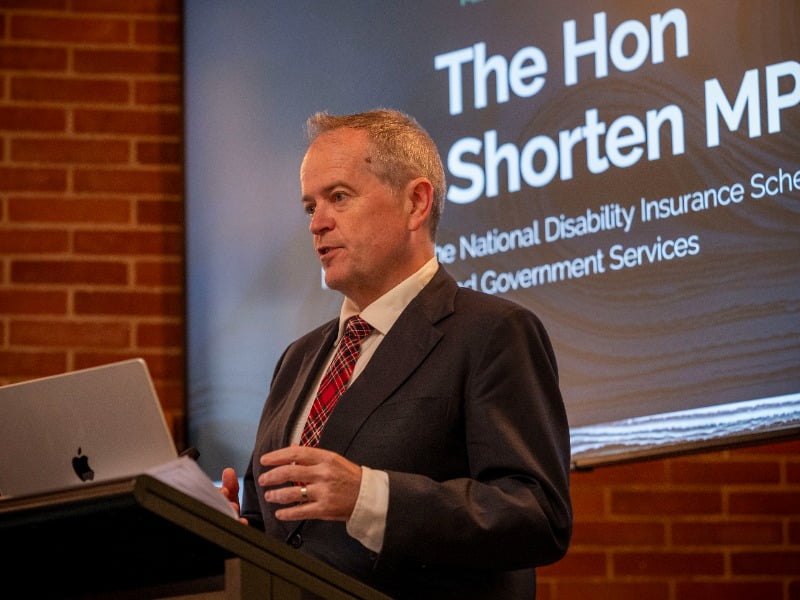Government Services minister Bill Shorten has flagged a new direction for federal digital service development, throwing his support behind smaller, cheaper methods that accept failure earlier in the project to avoid bigger catastrophes down the track.
But Canberra’s development partners warn more fundamental challenges like trust, interoperability and funding models still stand in the way.
At the launch of the InnovationAus.com Capability Papers in Canberra on Thursday, Mr Shorten argued for the switch to an ‘INVEST’ model: Independent, Negotiable, Valuable, Estimable, Small and, Testable.
“If we want to do things slightly differently and … build capability, we need to perhaps look at small, innovative projects where the cost is in single digit millions rather than hundreds of millions,” Mr Shorten said.
“These projects should align with government and citizens priorities [like] productivity, cost of living, equity, participation.”

Mr Shorten, whose two biggest agencies Services Australia and the NDIA spent about $7 billion on service implementation, is firming to the more nimble and less “vendor-led” approach after a series of tech wrecks in Canberra.
The Modernising Business Registers Program is being abandoned with little to show despite a $530 million government spend, while a welfare entitlements calculator at Services Australia was sensationally scrapped in July with “nothing to show” from $191 million.
“Agencies have a habit of chasing losses or reinforcing defeat,” Mr Shorten said.
The recent success in the digitisation of statutory declarations delivered by just two public servants and a $2.5 million outlay — had proved up the INVEST approach, Mr Shorten said.
“It’s going to save about $546 million in economic activity. So that is a 9,927 per cent return on investment,” Mr Shorten said. “Now, what investment banker or treasurer wouldn’t like those sorts of numbers?”
In a subsequent panel session on Thursday, private companies involved in the development of federal services welcomed the move to a more agile approach but said it would be a challenging for projects that aren’t discrete and need to integrate with other services or data sources.
“If everybody is re-inventing the wheel, you can’t get far with a single [million-dollar] investment,” said William Scheer, the founder of Canberra digital consultancy Reason Group.
“You have to be able to combine that [project] into a bigger thing [and] all of those things need to be able to interoperate.”
The minister had rightly identified a need to test early and often, Mr Scheer said, but currently there is not the environment in place for doing this across government.
Mr Scheer is pushing for a new sandbox testing environment that uses government architecture, allowing partners to test integration much more rapidly.
“Too much of these projects are done within silos,” he said. “So everyone’s reinventing the wheel, everyone’s trying to solve the problem on their own.”
The collaborative space would also help overcome the “massive trust deficit” that has arisen from the tech wrecks and numerous procurement and conflict of interest scandals, Mr Scheer said.
“The technology won’t solve the problems. It’s the people working together that will solve the problem.”
The poster child for the new approach to service development is the New South Wales government, which leveraged a dedicated digital fund to seed the smaller, iterative projects that built trust with citizens and spurred products like the state’s digital drivers licence.
David Elliot, the founder of software engineering firm Agile Digital, also welcomed the minister’s appreciation of new approaches to development and delivery, but questioned how quickly political leaders could turn the tide after longstanding caps on public service staff and a market incentivised to stretch out projects.
A results driven approach – where the service is directly measured against the social outcomes it is producing as soon as possible – is one way to turn the tide, he explained.
“If a digital project isn’t moving the needle in a social metric or a cultural metric, then I would terminate the project,” Mr Elliot said.
“They need to be funded in an agile fashion. So if we look at the way that projects funded in this town, in Canberra, there’ll be a lot of business case work and it will unlock 200, 300 or 400 million dollars.
“And then the ship sets off to sea and that money is going to get spent.”
Projects that should have been ended far earlier simply “hurl through” because of the funding model, according to Mr Elliot.
Senior bureaucrats are also pushing for a new approach to funding digital government, with a new ‘Digital Readiness Fund’ modelled on the New South Wales approach is now under consideration by Finance minister Katy Gallagher.
Do you know more? Contact James Riley via Email.

